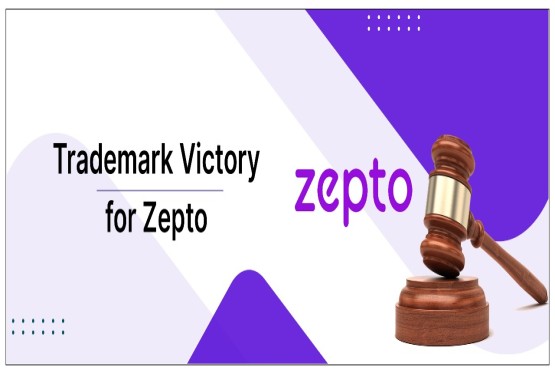India's trademark laws have changed a lot over time. These changes show how much India understands the importance of protecting ideas and brands to help businesses grow and trade globally. Let's take a look at how these laws have evolved and what they mean for companies and the economy. Trademarks are super important for telling products and services apart, making sure customers don't get mixed up, and helping companies create their own identities. In India, the rules about trademarks have changed a lot over time to keep up with how things are changing globally, with new technology and India opening up more to trade with other countries.
HISTORICAL BACKGROUND
In India, the journey of trademark protection started with the Trade Marks Act of 1940, which laid down the initial groundwork for safeguarding trademarks in a more organized manner. However, a major shift occurred with the introduction of the Trade Marks Act of 1999. This new law was a game-changer as it aimed to bring India's trademark regulations in line with international standards, especially the Agreement on Trade-Related Aspects of Intellectual Property Rights (TRIPS), making India a part of the global intellectual property administration.
The 1999 Act introduced crucial provisions concerning trademark registration, enforcement, and protection against infringement, establishing a strong legal framework for trademark protection in India. Over the years, there have been continuous efforts to improve and refine trademark procedures, making them more efficient and accessible. The digitization of trademark filings and the introduction of online databases have made the process more transparent and user-friendly.
Additionally, two significant milestones in India's trademark journey were the establishment of the Intellectual Property Appellate Board (IPAB) and India's accession to the Madrid Protocol in 2013. The IPAB has played a crucial role in resolving disputes and appeals related to trademarks, ensuring fair decisions in trademark cases. On the other hand, joining the Madrid Protocol has empowered Indian businesses to register and manage their trademarks internationally through a single application, simplifying global brand protection efforts.
Before India gained independence in 1947, trademark protection was mainly governed by British laws, including the Indian Registration of Trademarks under the British Trademarks Act of 1938. This laid some groundwork for trademark protection in India, but it wasn't as strong as it is today.
The Trade Marks Act of 1940 was a crucial development. It provided a basic system for registering and protecting trademarks. However, it mainly focused on registration and didn't have strong enforcement measures for dealing with trademark infringement.
After independence, India needed a more comprehensive legal framework to support its growing economy. So, the Trade and Merchandise Marks Act of 1958 replaced the 1940 Act. This new law had more detailed rules for trademark protection, including how to handle trademark infringement and what penalties should be imposed. It was a big step forward in creating a better system for protecting trademarks in India.
The Trade Marks Act, 1999
India's decision to join important international agreements played a significant role in shaping trademark laws in India. Becoming a member of the Paris Convention for the Protection of Industrial Property in 1998 and signing the Agreement on Trade-Related Aspects of Intellectual Property Rights (TRIPS) in 1995, as part of the World Trade Organization (WTO), required India to update its trademark laws to meet global standards. This resulted in significant changes to domestic laws, ensuring better protection for trademarks and a commitment to international principles of intellectual property rights.
The Trade Marks Act of 1999 was a milestone in India's trademark law history. It brought together and modified the laws related to trademarks, aligning them with the obligations of TRIPS. Some key features of this act included:
-
Introduction of service marks, allowing the registration of services as well as goods.
-
Recognition of "well-known" marks, which receive extensive protection across different classes.
-
Provisions for protecting registered users and allowing the registration of trademark assignments and transmissions.
-
Tougher penalties for trademark infringement and counterfeiting.
-
Simplification of the trademark registration process and reduction in the time taken for registration.
These changes made India's trademark laws more robust and efficient, ensuring better protection for trademarks and encouraging innovation and economic growth.
The Trade Marks Act, 2003
The Trademark Act of 2003 signifies a significant update or revision to the existing trademark laws within a particular country. The primary objective behind such an act is to improve the protection given to trademarks, which are indispensable assets for businesses. This legislative action might require various modifications, including enhancements to the registration procedures, expansion of the scope of eligible trademarks, or the implementation of more strong measures to combat trademark infringement and the proliferation of counterfeit goods. Essentially, the Trademark Act of 2003 seeks to strengthen the legal framework governing trademarks, thereby safeguarding the interests of both businesses and consumers.
The Trade Marks Act, 2017
The Trademark Act of 2017 represents a continuation of previous trademark legislation, aiming to modernize and adapt trademark laws to meet emerging challenges. This includes updating regulations to suit the digital era, offering clearer directives for registering non-traditional trademarks like sounds, colours, or three-dimensional shapes, and simplifying procedures for handling international trademark registrations, particularly under agreements such as the Madrid Protocol. Overall, the Act seeks to ensure that trademark laws remain relevant and effective in today's rapidly evolving business landscape.
The Impact of Legal Evolution
The evolution of trademark laws in India has significantly impacted the business landscape. It has provided a strong framework for the protection of trademarks, which are crucial for building brand identity and consumer trust. This legal protection encourages innovation and investment, contributing to the growth of businesses and the economy. Moreover, the alignment of India's trademark laws with international standards has enhanced its attractiveness as a destination for foreign investment.
Recent Amendments and Digitalization
In recent years, India's trademark laws have undergone further amendments to streamline processes and adapt to the digital age. The introduction of online filing systems, e-hearings, and digitization of records have made trademark registration and management more efficient and accessible. These changes reflect India's ongoing efforts to create a more user-friendly and efficient intellectual property ecosystem. Moreover, the trademark rules of 2017 encompass a set of regulations and guidelines established to govern the registration and protection of trademarks within a particular jurisdiction. These rules typically outline the procedures, requirements, and standards for trademark registration, enforcement, and maintenance.
Conclusion
The development of India's trademark laws illustrates the country's ongoing commitment to nurturing an environment that respects and protects intellectual property. This transition from basic regulations to a sophisticated legal framework mirrors India's journey toward becoming a more integrated player in the global economy. As trademark laws evolve to meet the demands of the digital era and international trade, platforms like Compliance Calendar play a vital role in offering strategic guidance to businesses.
FREQUENTLY ASKED QUESTIONS
- What is the significance of the Trademarks Act of 1999 in India's legal history?
The Trademarks Act of 1999 marked a pivotal moment in India's trademark law by aligning it with international standards, particularly the TRIPS agreement. It introduced key provisions for trademark registration, enforcement, and protection, laying the groundwork for a stronger legal framework.
- How did India's participation in international agreements impact its trademark laws?
India's participation in agreements such as the Paris Convention and TRIPS compelled it to update its trademark laws to meet global standards. This led to significant changes in domestic laws, ensuring better protection for trademarks and adherence to international principles of intellectual property rights.
- What changes were introduced by the Trademarks Act of 2017?
The Trademarks Act of 2017 sought to modernize trademark laws to meet emerging challenges, such as those posed by the digital era. It provided clearer directives for registering non-traditional trademarks and simplified procedures for international trademark registrations, aligning India's laws with global standards.
- How has the evolution of trademark laws impacted the business landscape in India?
The evolution of trademark laws has provided a robust framework for protecting trademarks, which are essential for building brand identity and consumer trust. This legal protection has encouraged innovation, investment, and economic growth, making India an attractive destination for foreign investment.
- What are the trademark rules of 2017, and how do they impact trademark registration and protection?
The trademark rules of 2017 encompass regulations and guidelines governing trademark registration and protection within India. They outline procedures, requirements, and standards for registration, enforcement, and maintenance, providing clarity and guidance for trademark owners and applicants.






























_(b)_of_the_Trademark_Act,_1999_(1)_crop10_thumb.jpg)



_crop10_thumb.jpg)



























_crop10_thumb.jpg)
_crop10_thumb.jpg)






_crop10_thumb.jpg)








_crop10_thumb.jpg)
_crop10_thumb.jpg)



_crop10_thumb.jpg)





























_crop10_thumb.jpg)

















_crop10_thumb.jpg)






_crop10_thumb.jpg)












































































































































_crop10_thumb.jpg)




































_crop10_thumb.jpg)












_crop10_thumb.jpg)






















